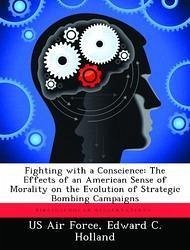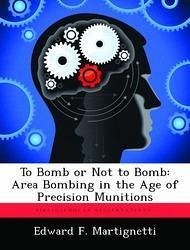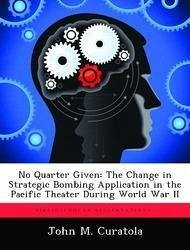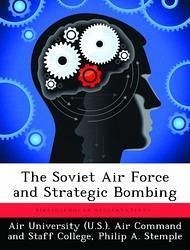Nicht lieferbar

Bombing for Effect: The Best Use of Airpower in War
Versandkostenfrei!
Nicht lieferbar
Both joint and Air Force doctrine are clear on the intent of the US to use effects-based targeting in military conflicts for the foreseeable future. The Air Force embraced this concept as early as World War II, but has met with mixed results. This thesis answers the question of how the Air Force can improve its effects-based air campaigns. The author analyzes existing doctrine for the official guidance on effects-based operations. The current guidance is followed with the effects-based ideas expressed by prominent airpower theorists throughout history. Four case studies are then analyzed based...
Both joint and Air Force doctrine are clear on the intent of the US to use effects-based targeting in military conflicts for the foreseeable future. The Air Force embraced this concept as early as World War II, but has met with mixed results. This thesis answers the question of how the Air Force can improve its effects-based air campaigns. The author analyzes existing doctrine for the official guidance on effects-based operations. The current guidance is followed with the effects-based ideas expressed by prominent airpower theorists throughout history. Four case studies are then analyzed based on these ideas to indicate how the Air Force has performed in recent history. This thesis concludes that the Air Force can improve its effects-based air campaigns by improving the planning process as well as educating civilian and military leadership on the effects-based concept. Planners must understand the objectives at all levels of war, and these objectives must be clear, measurable, and achievable. Education of civilian and military leaders is crucial for the development of clearly defined objectives and successful execution of a plan designed to achieve specific effects, not just the destruction of individual targets. This work has been selected by scholars as being culturally important, and is part of the knowledge base of civilization as we know it. This work was reproduced from the original artifact, and remains as true to the original work as possible. Therefore, you will see the original copyright references, library stamps (as most of these works have been housed in our most important libraries around the world), and other notations in the work. This work is in the public domain in the United States of America, and possibly other nations. Within the United States, you may freely copy and distribute this work, as no entity (individual or corporate) has a copyright on the body of the work. As a reproduction of a historical artifact, this work may contain missing or blurred pages, poor pictures, errant marks, etc. Scholars believe, and we concur, that this work is important enough to be preserved, reproduced, and made generally available to the public. We appreciate your support of the preservation process, and thank you for being an important part of keeping this knowledge alive and relevant.








